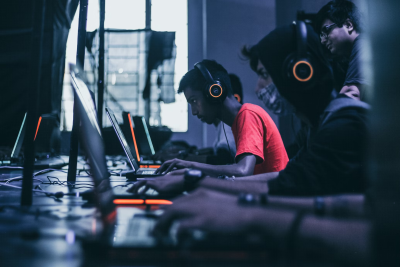Where digital entertainment and live arts converge, there emerges a quite captivating new domain that audiences could explore. And with every advancement in technology, the way we watch theater, film, or even music – or, for that matter, experience game worlds – gets reshaped. This growth has blurred lines from virtual performances to online casino platforms, while the difference between traditional live arts and digital becomes increasingly vague. This article develops how digital entertainments influence the live arts and its potential reach for new audiences, along with the opportunities likely to be developed in the years to come.
Digital Art Forms and the Evolution of Traditional Performances
Technology like Zoome has opened completely new frontiers for artists and performers; newer forms of engagement with the audience extend beyond physical walls into, for example, theaters, cinema halls, and concert halls. The virtual would include streaming platforms, interactive experience venues, and online art galleries that are finding more and more audiences.
Live Streaming and Interactive Performances
- It has been a tide of live theatre and musical performances which enable fans to access live events as they happen in real time from the comfort of their homes.
- Applications such as National Theatre Live broadcast popular productions, while specific online gaming experiences, such as Zoome, combine elements of live interaction with gamified experiences, adding an exciting interactive element to traditional formats.
Virtual Reality and Augmented Reality in the Arts
Virtual and augmented reality are making art exhibitions and theater performances almost fully immersive. For example, museums make virtual tours to reach more visitors, while experimental theaters create an environment in which audiences can be fully immersed. In such a way, it enables the technology to be very adaptive and further the possibilities of what art can be by making it possible for the audience to engage in ways thought unimaginable.
The Rise of Digital Gaming: Bridging the Gaps Between Cinema, Theatre, and Online Entertainments
To others, gaming is an entirely different world. Thus, the development of digital casinos and online gaming started to bridge such gaps between entertainment sectors. Sites like Zoome offer this unique experience of online casinos with the blended excitement of traditional gaming and the thrill of live interaction; digital entertainment thereby becomes participative, not passive.
Casino Games Meet Live Interaction
- Online casinos, such as Zoome, offer visually immersive and socially interactive game experiences that could be likened to a live performance.
- In fact, players can play games in real time, communicate with other users, and receive high levels of production values, similar to live theater or cinema.
- It’s creating active, digital spaces for fans to interact, build communities, and enjoy their favorite activities together.
Game Design as an Art Form
The art of game design has evolved to become even more sophisticated, with narrative-driven games borrowing from film and theater. The use of cinematic cutscenes, well-developed characters, and complex storytelling in digital games is similar to the creative process found in traditional performing arts.
Digital Entertainment and Its Impact on Traditional Art Forms
Digital platforms in entertainment are taking on a whole new level, which, in turn, creates exciting opportunities while raising several questions about the future of traditional art forms. Although some have raised concerns that such a shift threatens the integrity of live performances, others believe that it can create an opportunity for the extension of the reach and relevance of the arts into the digital era.
Expanding Audience Reach
Digital entertainment has opened up the world for performances, concerts, and art exhibitions to reach their audience. Artists who performed in front of local crowds now can broadcast their work to viewers across the world. Take, for instance, the streaming services like Netflix and YouTube that turn indie filmmakers into international sensations, or the fact that musicians can livestream their performances to fans across continents.
New Revenue Streams for Artists
Virtual events also open up new revenue channels for artists. Online performances translate into sold virtual tickets through theater productions and music concerts reaching their audiences with interactive features such as live Q&A and fan interactions. On their platforms, combining art with gaming, like Zoome does, for instance, the player will also be able to win prizes at the end. This is about adding a game to it.
Conclusion: A Hybrid Future for the Arts
As digital entertainment and live arts continue to interweave, the future is bright for both. Technology isn’t eradicating traditional art forms; it’s opening up more conduits to creativity and audience engagement. Be it a live streaming of theater or an interactive gaming experience, options are endless. Artists and performers are learning to adapt, embracing the digital world while remaining valid and keeping the magic of live interaction. The art world is changing, and only those will shape its future who can merge these two realms.


